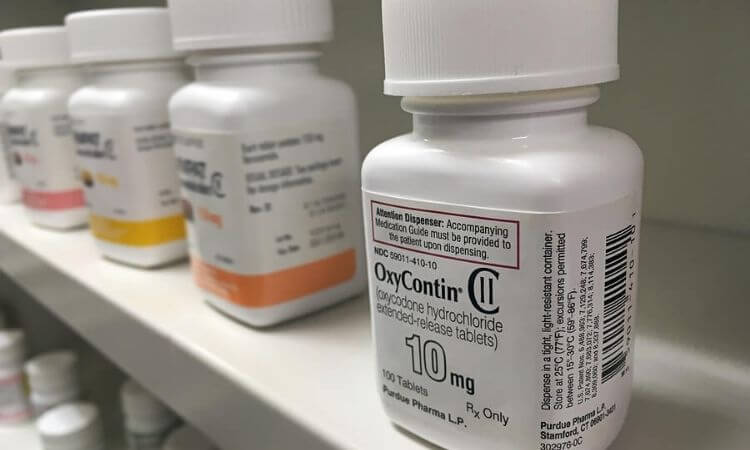
Oxycodone is a semi-synthetic opioid painkiller and is among the most abused prescription drugs in the United States. The terms “opiate” and “opioid” are often used interchangeably, but they do refer to some differences between similar drugs.
The term “opiate” is often used in reference to natural compounds in the opium poppy. Opium can be extracted from the plant and contains the chemical compounds morphine, codeine, and thebaine.
Semi-synthetic opioids are opiates that have been chemically modified and work by binding to the same receptors as their natural counterparts. Fully synthetic opioids are entirely manufactured in a lab and include drugs such as fentanyl and methadone.
Many people have moved away from distinguishing between opiates and opioids and use the term “opioid” to denote both natural or human-made substances. If the term “opiate” is applied, it is usually thought of as the naturally-occurring compounds within the opioid class.
Opioids are also technically classified under the term “narcotic.” But, due to the adverse connotations that the term has when associated with illicit drugs, it has largely fallen out of use in medical environments. It might be helpful to think of opiates as being a subclass of opioids, and opioids being a subclass of narcotics.
Oxycodone Definition
Oxycodone is made by altering thebaine, a chemical compound found in opium. It changes the way in which the body perceives pain and also manipulates neurotransmitters in the brain responsible for feelings of well-being and reward. Under the Controlled Substances Act, oxycodone is classified as a Schedule II drug, indicating that it has a definite medical purpose but still a high potential for abuse.
Oxycodone is the potent main ingredient in many painkillers prescribed to those who are experiencing moderate to severe pain. Pills come in a variety of shapes, sizes, and colors depending on brand and dose, and oxycodone is also sometimes prescribed as a liquid. It is often found in a combination product with other drugs, including acetaminophen and ibuprofen.
Although opioids are prescribed primarily to relieve pain, they can have adverse effects such as drowsiness and can lead to chemical dependence. Because opioids have a relatively high potential for abuse and addiction, the use of prescription opioids is strictly regulated in the U.S.
Not all opioids, however, can be prescribed for treatment. For example, heroin, a derivative of morphine, is a semi-synthetic opioid that is illegal and commonly abused by injection.
Common Oxycodone Brands
Among the most common brand names for oxycodone-based drugs include the following:
OxyContin
OxyContin is a controlled-release formula provides relief for chronic pain for up to 12 hours. Many people circumvent the time-release action by crushing and snorting the drug, or by dissolving the tablets in water and injecting the solution. Other modes of abuse include using more than the prescribed dosage, taking the drug for longer than the prescribed length of time, and chewing or injecting OxyContin.

Percocet
Percocet is a combination of oxycodone and acetaminophen and is commonly prescribed for a number of painful conditions that range from mild to severe. Like OxyContin, crushing and snorting Percocet is a common method of abuse.
Percodan
Percodan contains a combination of oxycodone and aspirin and belongs to a class of drugs called salicylates. It works in the body to reduce pain, fever, and inflammation. Although Percodan is not prescribed as often as Percocet, the drug has a high potential for addiction and has contributed to the epidemic of opioid addiction in the U.S.
Roxicodone
Roxicodone is a rapid-release formulation of oxycodone that is used to treat moderate-severe pain. It is often administered to a patient before surgery to sedate him or her and for the management of around-the-clock pain. When abused, such as when a person crushes or melts down the tablets for smoking or injecting, the drug induces a very quick high.
Oxycodone Effects and Abuse
As noted, using more than the prescribed dosage, taking the drug for longer than prescribed by a doctor, or chewing, crushing then snorting, or injecting the pills are all considered abuse of oxycodone. Many people abuse oxycodone for its euphoric effects, which are said to be somewhat comparable to that of heroin.
The effects of oxycodone use include:
- Intense feelings of well-being
- Reduced anxiety
- Confidence
- Relaxation and calm
- Drowsiness
- Dizziness
Because prescription opioid use is considered acceptable in our society, it can be challenging to identify or address abuse. Especially in the cases of valid prescriptions, it can be hard to distinguish the difference between an acceptable dose and misuse. Ultimately, it comes down to the adverse consequences the drug has on the user’s life and health. A definite red flag of abuse occurs when a person runs out of their medication too early before their next refill is available.
Common Drug Combinations
Alcohol and benzodiazepines are two of the most hazardous substances to mix with oxycodone. Because oxycodone, alcohol, and benzos are all central nervous system depressants, combining them can result in severe health complications, including death. This deadly cocktail can dramatically reduce breathing and cardiac function to the point of failure. Even if this combination doesn’t prove to be fatal, it can result in irreversible damage to the brain and major organs.
People dependent on oxycodone also frequently abuse marijuana and stimulants. These may be taken in conjunction to either intensify or diminish the effects of oxycodone.
Oxycodone has also been known to be a potential gateway drug for heroin use. When a person addicted to oxycodone cannot access their drug of choice, they may resort to using heroin as a less expensive, more accessible drug with similar effects.
Is Oxycodone an Opiate?: Overdose

When a person consumes a dose of oxycodone that overwhelms the body and impedes life-preserving physiological processes, such as breathing, they can experience an overdose. An oxycodone overdose can be a terrifying experience that includes a number of life-threatening symptoms. The sooner these symptoms are identified and addressed, the better the person’s odds are of surviving.
Oxycodone overdose symptoms include the following:
- Vomiting
- Pinpoint pupils
- Low blood pressure
- Pale skin
- Bluish lips and fingernails
- Limp body
- Cold, clammy skin
- Profoundly slow heart rate
- Unresponsiveness
- Unconsciousness
- Slow or stopped breathing
- Seizures
In addition to opioid overdose, as noted, many oxycodone products contain other drugs such as acetaminophen or aspirin, which can come with their own dangers. And, overdose on products containing acetaminophen, for example, can result in life-threatening liver failure.
If you witness any of these symptoms present in a user after consuming oxycodone, call 911, and seek emergency medical help immediately.
Getting Treatment for Addiction
Opioid addiction can be a devastating and potentially life-threatening condition that dramatically and adversely affects the lives of those suffering as well as their loved ones.
Midwood Addiction Treatment specializes in the treatment of opioid addiction and offers both partial-hospitalization and outpatient formats. Our comprehensive programs feature clinically-proven services, such as cognitive-behavioral therapy, counseling, psychoeducation, group support, medication-assisted treatment, aftercare planning, and more.
We are dedicated to ensuring that every client receives all the tools, skills, resources, and support they need to foster a new, healthier life for themselves, free from the use of drugs and alcohol. Contact us today to discover how we help people free themselves from the powerful chains of addiction for life!